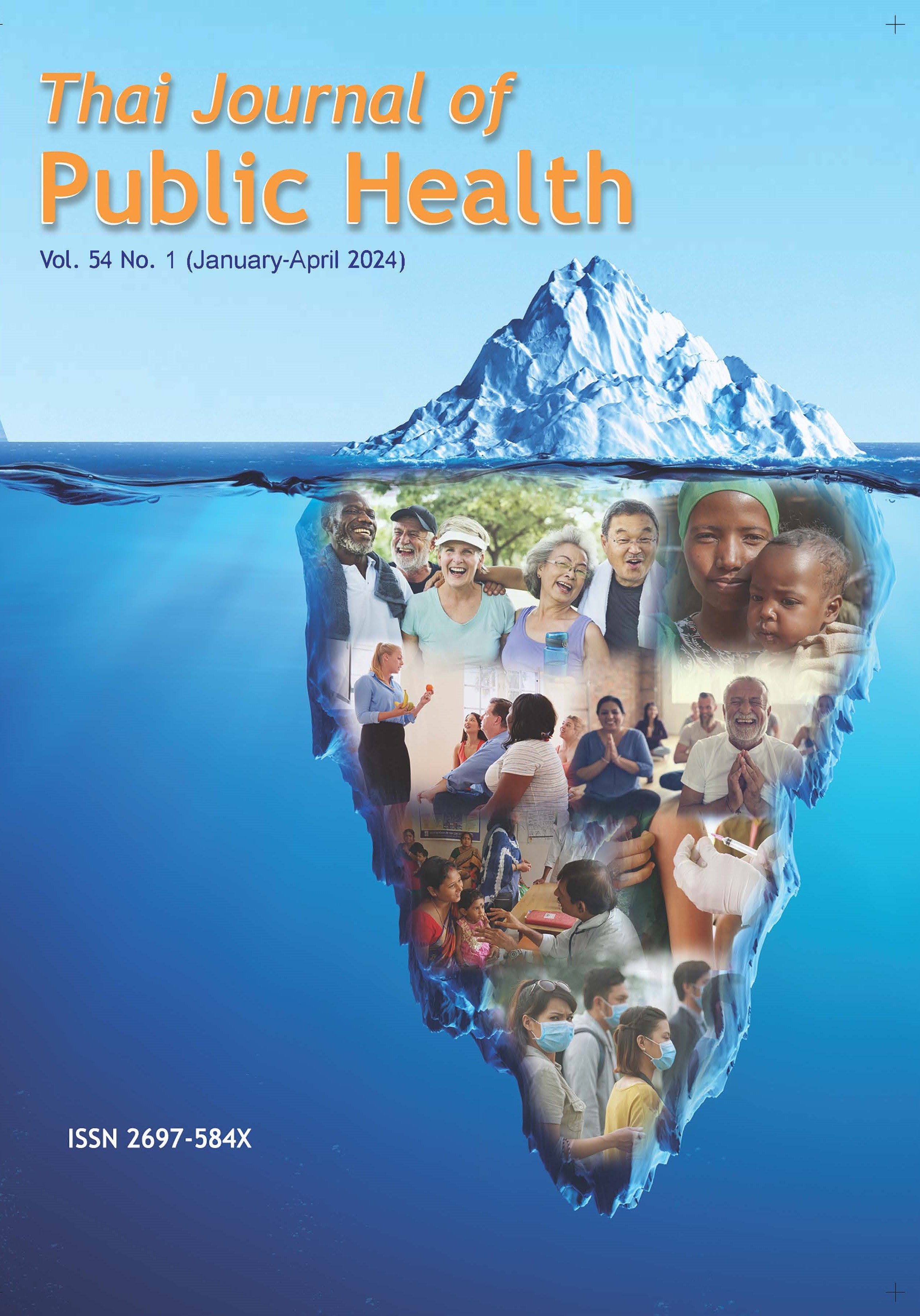Factors Associated with Violence of Persons with Disabilities in the Thai Context
Keywords:
Disability, Violence, ThailandAbstract
This study used an analytical descriptive research approach, focusing on violence against people with disabilities, the types of violence experiences, and the factors related to the violence among people with disabilities in the Thai context. This study applied the Ecological model for understanding interpersonal violence from the World Health Organization as the theoretical guideline. The calculated samples consisted of 201 people who have a disability aged 20 years old and over. Descriptive statistics were used to describe the general characteristics, and logistic regression was applied for the data analysis. The results revealed that people with disability experienced overall violence at 98%, psychological violence 96.5%, physical violence 77.1%, violence from being neglected 75.6%. Factors influencing violence against people with disabilities composed of younger age, being female, low income, living with illness, poor relationships within the family, less family members, and social values to violence. The result of this study could be beneficial in developing awareness and prevention programs to protect human rights violations against people with disabilities in the Thai context.
References
World Health Organization. GLOBAL STATUS REPORT ON VIOLENCE PREVENTION 2014. Switzerland: Luxembourg, 2014.
Mitra M, Mouradian VE, Diamond M. Sexual violence victimization against men with disabilities. Am J Prev Med 2011; 41(5) DOI:10.1016/j.amepre.2011.07.014
Krnjacki L, Emerson E, Llewellyn G, Kavanagh AM. Prevalence and risk of violence against people with and without disabilities: findings from an Australian population-based study. Aust N Z J Public Health 2016; 40(1): 16-21. DOI:10.1111/1753-6405.12498
Khalifeh H, Howard LM, Osborn D, Moran P, Johnson S. Violence against people with disabilities in England and Wales: findings from a national cross-sectional survey. PLoS One 2013; 8(2): e55952. DOI:10.1371/journal.pone.0055952
Bandeira CLJ, Arboit J, Honnef F, da Silva EB, de Andrade A, da Costa MC. Violence in rural areas against disabled people from the perspective of their families. Rev Bras Enferm 2023; 76(Suppl 2): e20220404. DOI: 10.1590/0034-7167-2022-0404
Elklit A, Murphy S, Skovgaard C, Lausten M. Physical violence against children with disabilities: A Danish national birth cohort prospective study. Eur J Psychotraumatol 2023; 14(1): 2173764. DOI: 10.1080/20008066.2023.2173764
Fettig N, Mitchell H, Gassoumis Z, Nizam Z, Eliason SW, and Cory S. Adult Maltreatment Risk Factors: Adding Community-Level Factors to an Individual-Level Field. Trauma Violence Abuse 2023. DOI: 10.1177/15248380221137659.
Amir-Ud-Din R, Fatima S, Aziz S. Is Attitudinal Acceptance of Violence a Risk Factor? An Analysis of Domestic Violence Against Women in Pakistan. J Interpers Violence 2021 Apr; 36(7-8): NP4514-41. DOI: 10.1177/0886260518787809. Epub 2018 Jul 13.
Fernández-González L, Calvete E, Orue I, Amir-ud-Din R. The Role of Acceptance of Violence Beliefs and Social Information Processing on Dating Violence Perpetration. J Res Adolesc 2019 Sep; 29(3): 763-76. DOI: 10.1111/jora.12414. Epub 2018 Jun 13.
Department of Promotion and Development of the Quality of Life of People with Disabilities, Ministry of Social Development and Human Security, 2017.
Department of Mental Health, and Social Assistance Center. Results of the overall violence survey in 76 provinces of Thailand in 2013.
Phornnapa Charoensant. Factors Influencing the Quality of Life among Physically Disabled People in Samut Prakan Province. JRTAN 2010; 11: 80-88.
Thaneerat Pongpaew. Quality of life disabled people in the subdistrict administrative organizations in Thasala District, Nakhon Si Thammarat Province: Factors affecting and development. A Thesis Submitted in Partial Fulfillment of the Requirements for the Degree of Master of Master Public Administration Prince of Songkla University, 2015.
Daniel WW. Biostatistics: Basic Concepts and Methodology for the Health Sciences 2010: DOI:10.1093/eurpub/ckl280
Chiangkhong A. Factors associated with violence against nurses in workplace. Requirements for the Degree of Master of Master in Science, Major in Public Health Nursing, Mahidol University, 2011.
Srivilai V. Factors associated with violence against elderly in Dan-Chang District, Suphanburi Province. Requirements for the Degree of Master of Master in Science, Major in Public Health Nursing, Mahidol University, 2011.
Ministry of Public Health, Department of Mental Health, and Social Assistance Center. OSCC Assessment and rehabilitation. 2013 Bangkok, Thailand.
Smith DL. Disability, Gender and Intimate Partner Violence: Relationships from the Behavioral Risk Factor Surveillance System. Sex and Disabil 2007; 26(1): 15-28. DOI:10.1007/s11195-007-9064-6
Perreault S. Criminal Victimization and Health: A Profile of Victimization Among Persons with Activity Limitations or Other Health Problems. Catalogue; 2009 no. 85F0033M-No. 21
Puri M, Misra G, Hawkes S. Hidden voices: prevalence and risk factors for violence against women with disabilities in Nepal. Bmc Public Health 2015; 15: 261. DOI:10.1186/s12889-015-1610-z
Downloads
Published
Issue
Section
License

This work is licensed under a Creative Commons Attribution-NonCommercial-NoDerivatives 4.0 International License.
Creative Commons License CC-BY-ND


